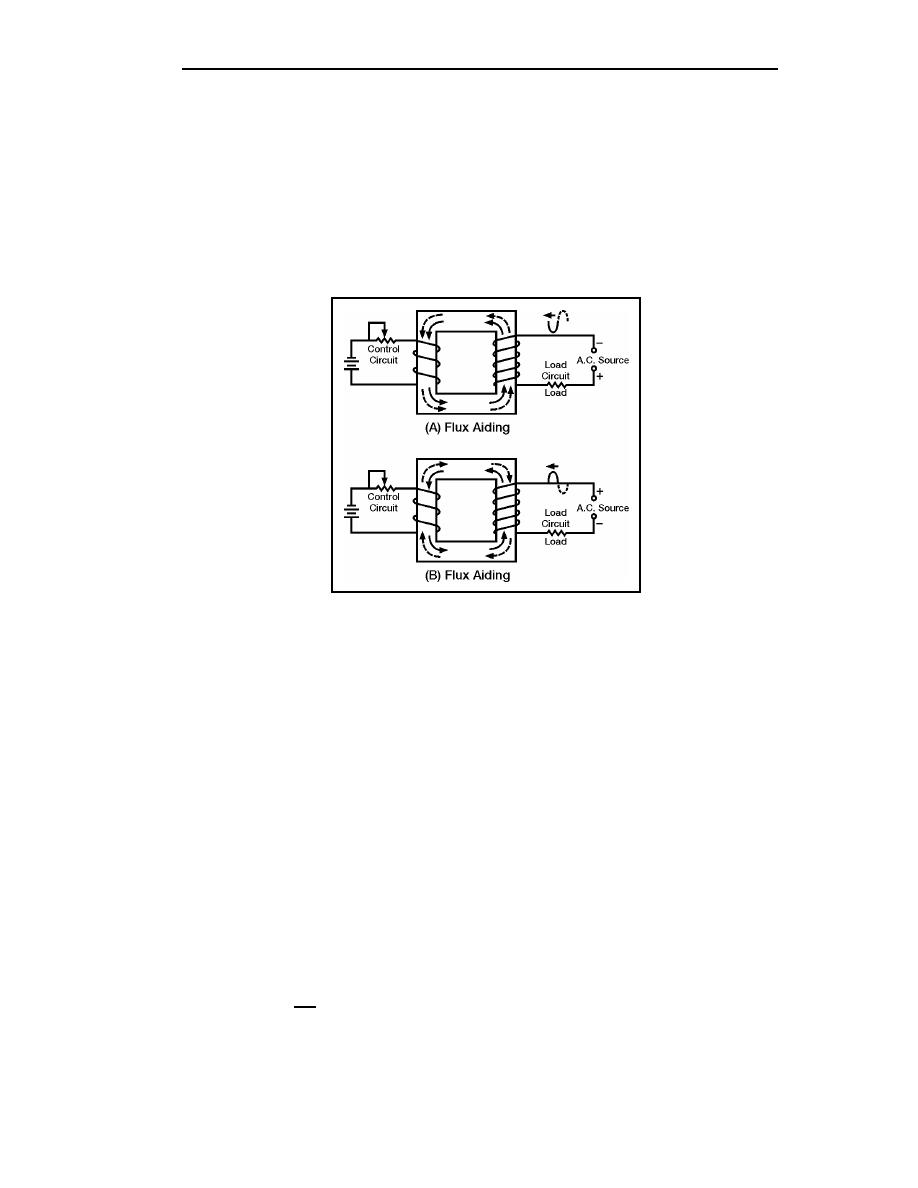
TC 9-62
7-119. If a DC voltage is applied to the control winding of a saturable-core reactor and an
AC voltage is applied to the load windings, the AC flux will aid the DC flux on one half
cycle and oppose the DC flux on the other half cycle (see Figure 7-32). The dashed-line
arrows show the load flux and the solid-line arrows show the control flux. View (A) shows
the load and control flux aiding during one half cycle of the AC. View (B) shows the load
and control flux opposing during the other half cycle of the AC. This situation causes the
operating point of the saturable-core reactor to shift with the applied AC. However, the
situation would be better if the load flux was not an influence on the control flux. Figure 7
33 shows a circuit in which this is accomplished.
Figure 7-32. Flux Paths in a Saturable-core Reactor
7-120. During the first half cycle, the load circuit flux (dashed-line arrows) cancels in the
center leg of the core (see Figure 7-33, view (A)). As a result, there is no effect upon the
flux from the control circuit. During the second half cycle, the polarity of the AC (and
therefore the polarity of the flux) reverses as shown in view (B). The result is the same as it
was during the first half cycle. There is no effect upon the control circuit flux.
7-121. Figure 7-34 shows another approach to solving the problem of load flux affecting
control flux. Figure 7-34 shows a toroidal saturable-core reactor. The shape of these cores
is a toroid (donut shape). The windings are wound around the cores so that the load flux
aids the control flux in one core and opposes the control flux in the other core.
7-122. During the first half cycle, the flux aids in the left core and opposes in the right
core (see Figure 7-34, view (A)). During the second half cycle, the flux opposes in the left
core and aids in the right core (see Figure 7-34, (view (B)). Regardless of the amount of
load flux or polarity of the load voltage, there is no net effect of load flux on control flux.
7-123. Figures 7-33 and 7-34 represent practical, workable saturable-core reactors.
Circuits similar to these are actually used to control lighting in auditoriums or electric
industrial furnaces. These circuits are sometimes referred to as magnetic amplifiers;
however, that is not technically correct. A magnetic amplifier differs from a saturable-core
reactor in one important aspect and that is a magnetic amplifier has a rectifier in addition to
a saturable-core reactor.
7-42
TC 9-62
23 June 2005



 Previous Page
Previous Page
